Table of Contents Show
Christopher Nolan’s Dunkirk met with well-deserved praise at its release in 2017. The evacuation of Dunkirk Beach was given new life through the combined talent of Nolan, composer Hans Zimmer, and editor Lee Smith. It is a war film unlike any other and deserves to be thoroughly examined. Dunkirk forces the audience to feel the emotions of war alongside the waiting British soldiers.
The War Film Genre
The horror of war and its impact on society has always been in the eye of the media, but film presents an outlet for entertainment as well as information. The war genre covers many themes of war including survival, combat, gallant sacrifices, and the effects it has on the home front. The action-oriented films cover different viewpoints on several aspects of wars; POW camps, submarine warfare, espionage, and personal heroism.
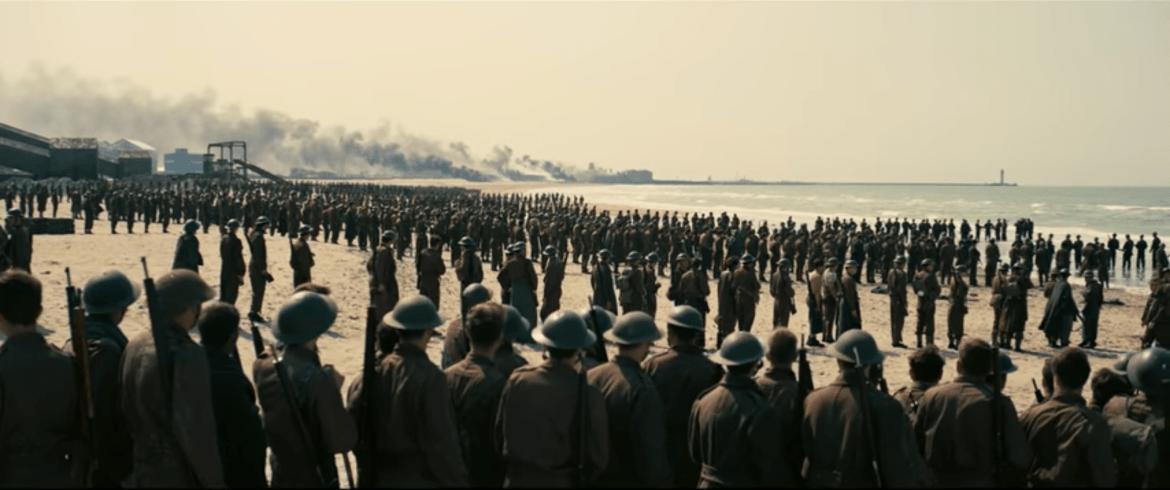
The first documented war film was a ninety-second propaganda effort in 1898 titled, Tearing Down the Spanish Flag. The short film is a perfect example of how the government can use war films to inspire the unity of a nation. War films (( Film Site )) also allow the public to gain a look inside the struggles of soldiers as they become reduced to numbers, attempting to survive. They can become a tool to gain an understanding of our veterans as directors create visuals that elicit certain emotions felt by troops.
With a large fanbase, war films have become like any other genre and developed their cliches. There is a troop to focus on, if not an individual, composed of a handful of personalities. There are the classic scenes of high-ranking officers creating battle plans, soldiers sitting around discussing the war, and the protagonist giving an inspiring speech. Dunkirk measures up to the great war films before it while breaking the genre molds in a breathtakingly artistic way that resonates with audiences.
Smith’s Seamless Editing
Dunkirk is composed of three different storylines with their length of time: a week at “The Mole,” a day at “The Sea,” and one hour in “The Air.” Lee Smith’s talent in editing shined as he skillfully pieced the stories together for a completed non-linear war epic. At the beginning of the film, as audiences are learning the rules of the war the editing rhythm is slow. However, it does gain speed towards the climax and merging of the three storylines.
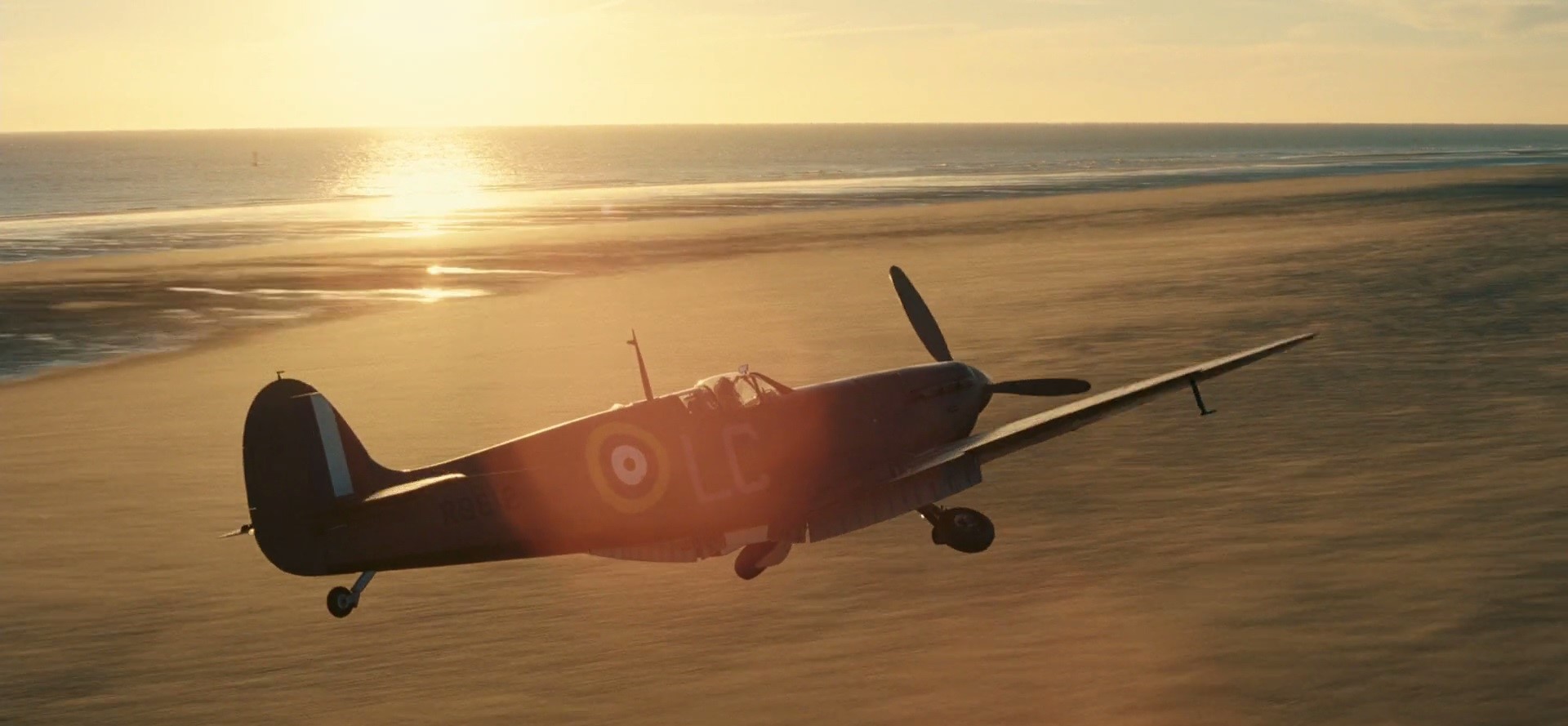
What is impressive is that, although Dunkirk hops across three stories reaching different points in their timelines, the audience is never thrown outside the sphere of the film from confusion. More often than not, war films are told chronologically so that viewers gain an understanding of protagonists and create an emotional connection before the action starts.
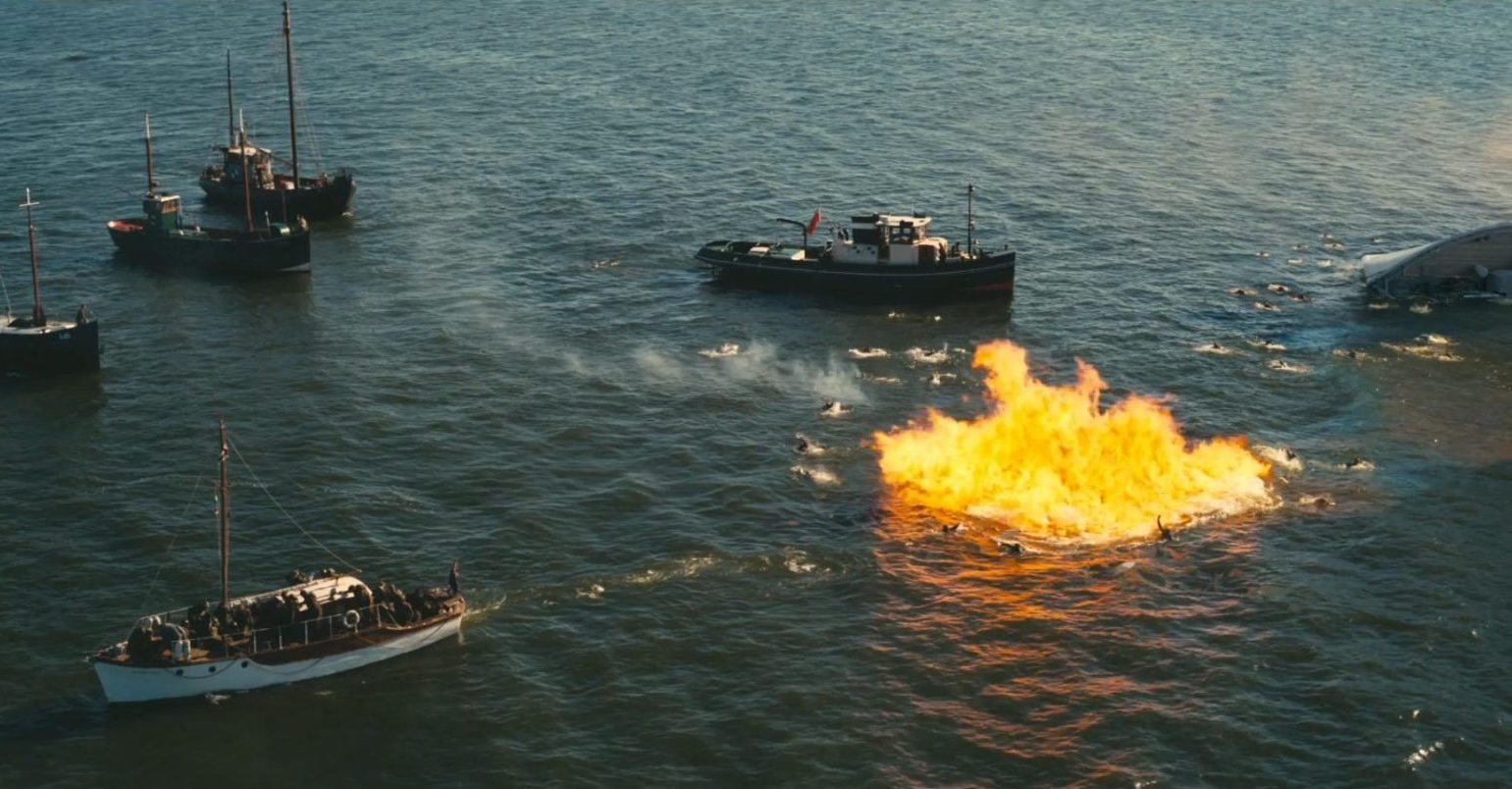
While Dunkirk bounces from one time to the next, the connection to the characters remains as audiences still find themselves rooting for the soldiers’ safe escape. Smith’s editing allows emotions for one character to carry on to the next as smoothly as the shots change.
Zimmer’s Influential Score
Unlike other war movies, Dunkirk lacks dialogue. This isn’t a disadvantage to Nolan though because it allows experimentation in sound for even better results. Zimmer has created a score that flows throughout the entirety of the story, creating a constant feeling of anxiety. He utilizes Shepard’s tone (( Medium )), a sound of ascending scale, uniquely. He stacks three simultaneously to represent the different timelines. This allows the audiences’ feelings to carry through to the next obstacle. It is also heightened by Zimmer’s use of heartbeat thrums and carefully placed silence.
Besides Zimmer’s ticking tones (( Business Insider )), the use of muffled noises brings attention to significant dialogue or sound effects. The first bombings on the beach are a perfect example. Once the character Tommy throws himself to the sand all noise is muffled so the only things heard are the bombs and the sand falling on top of him. This muffling effect showcases Tommy’s fear in a recognizable way that people know because when shocked or panicked sometimes we can’t make out noises.
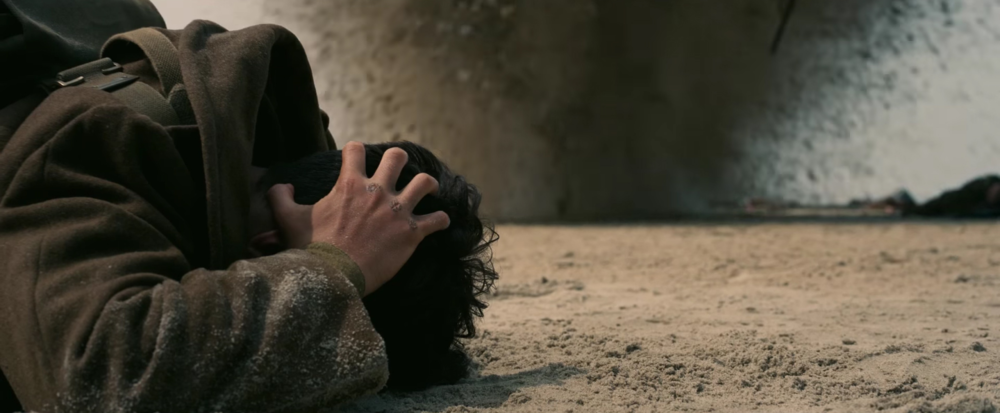
While silence in war films isn’t new since it brings attention to the chaos of battle, the combination of Zimmer’s score alongside the silences brings a new tension. During certain scenes, with the help of sound, it almost feels as if the audience is in the middle of the war. Hearing it in theaters with surround sound speakers some might have felt stranded on the beach too with no place to escape or hide.
Intimate Cinematography
The cool-tone filter in Dunkirk creates a somber tone for the fear-filled escape movie. One particular shot is well-known from the trailers, the crowded army hats of soldiers squeezed tightly on top of the Mole. The way the hats fill the space of the pier doesn’t allow an inch of the wooden bridge to be seen. This is a shocking image as, if all these soldiers are only the ones first in line to board the next ship, the actual number must be extremely high. The way the shot is positioned forces the audience’s eye to sweep and take in the number of lives on the line.
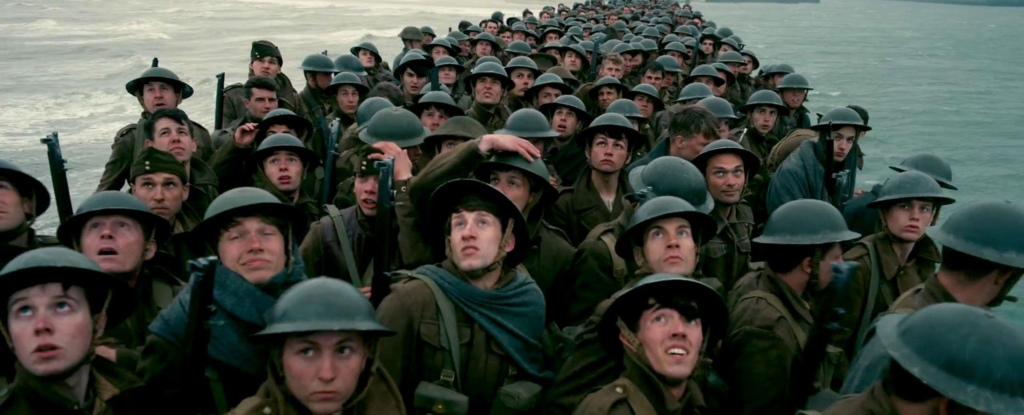
There are a total of four bombed ship scenes within the week-long timeframe of “The Mole” and each provides shots of the ocean mercilessly gobbling up soldiers. At times the water rises upward on the screen while others it swipes across as it pulls struggling survivors to their eventual deaths. One scene, in particular, elicits panic and fear from the audience; the Spitfire pilot, Collins, stuck in the cockpit while drowning. The shot was beautifully done to only include the space of the cockpit on screen, creating a feeling of claustrophobia. With too small of a space to freely move his arms and use force to escape, anxiety hits an all-time high.
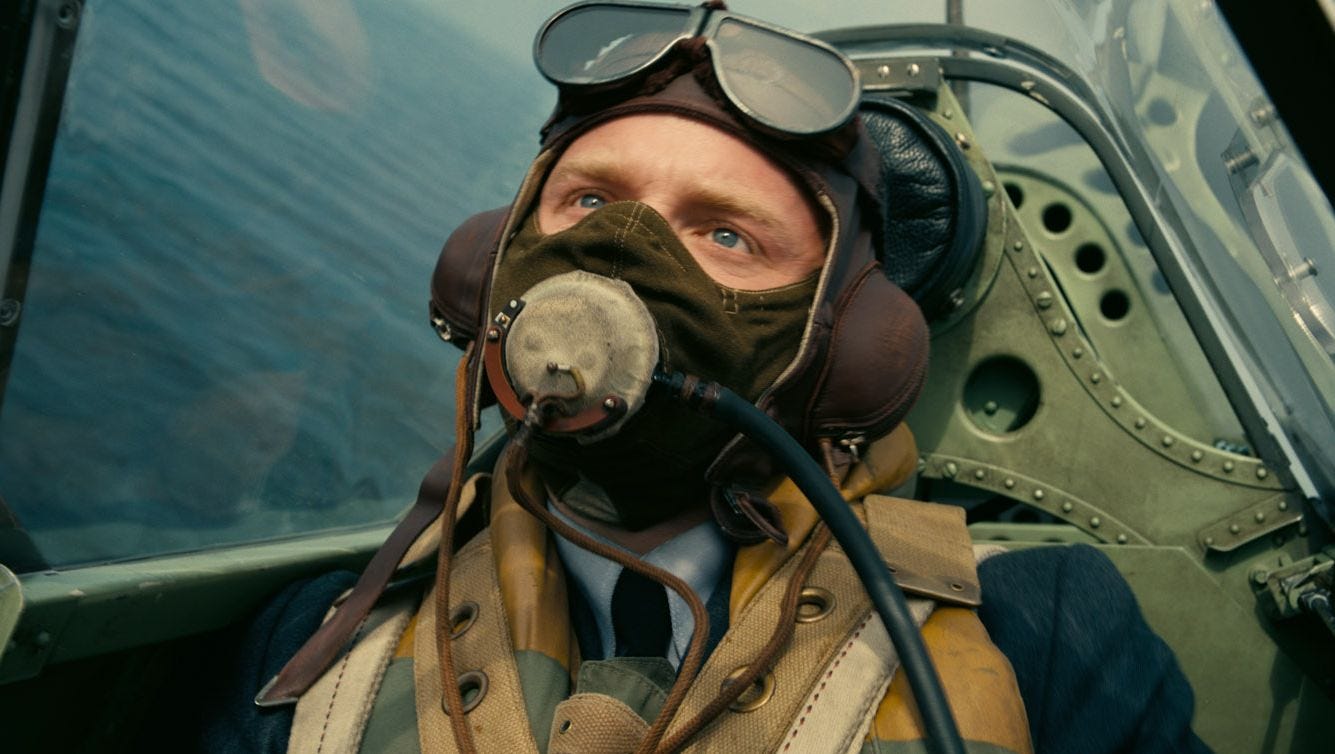
A carefully crafted shot has the power to elicit unconscious reactions from audiences, allowing them to experience the sensation being portrayed to a certain extent. Most war genre films will have these shots that connect more than others, usually of a soldier finally breaking down. Dunkirk stands apart from them because with less dialogue it allows its imagery to speaks on another level to its viewers. The connection made can be seen as deeper than average if the audience is ready to immerse themselves.
Dunkirk’s Critics
As Dunkirk is unlike war films before it, it has received certain critiques from audiences. Some claim the characters lack the depth to allow for an emotional connection. Others say the absence of a leading actor confuses who to focus on. What makes Nolan’s film a masterpiece in concern to character is the fact that there is no focus on one or anyone’s background. This allows the audience to immerse themselves into the situation as if they are a soldier on the beach. Everyone is just trying to survive for the chance to return home, and no one knows anything more about each other.
The connection comes from the dire situation to live another day. What audiences may have expected was graphic battle scenes, heart-wrenching deaths, or even small comical moments. What they received, however, was much more as they became stranded on a beach alongside British soldiers. Dunkirk is a successful emotional war epic that expands the genre for future films.
